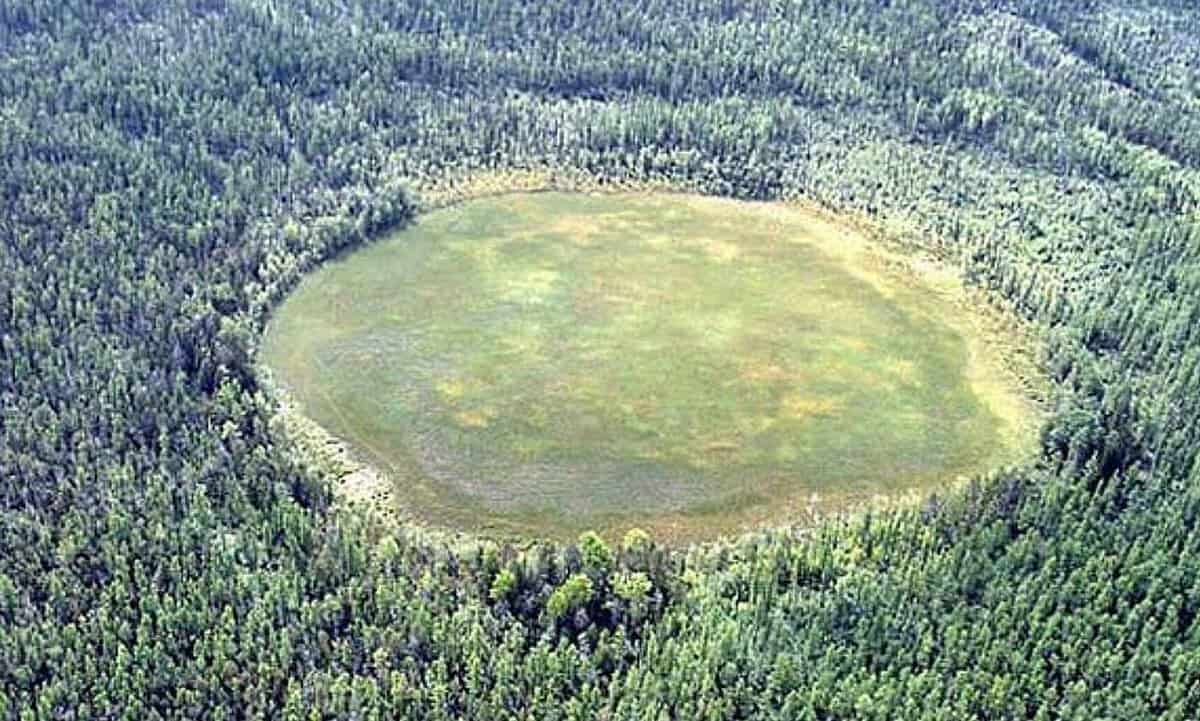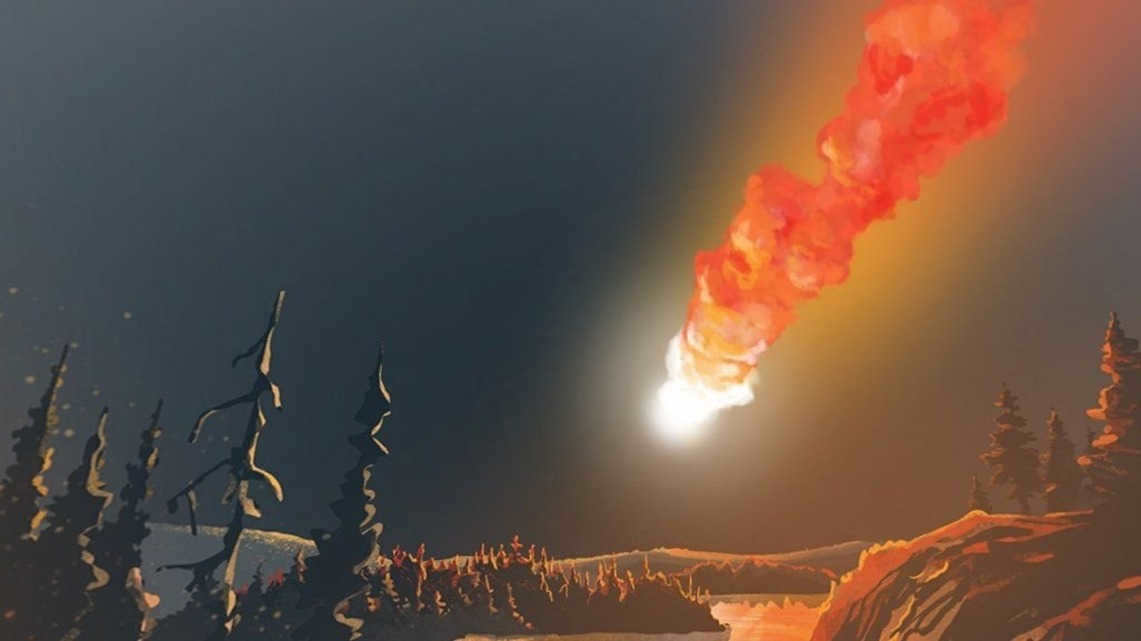
The final countdown: a disaster resembling the Tunguska meteorite blast is imminent
The 115th anniversary of the colossal explosion that shook the Podkamennaya Tunguska region in the early 1900s is celebrated on June 30. According to an expert, a similar event could occur in the near future, and humanity is unprepared for it.
Andrei Zlobin, Ph.D., an expert from the Center for Planetary Protection
It is possible that the explosion will reoccur within the next few years. Where will the next impact of a megaton asteroid or comet take place?
In 1908, St. Petersburg narrowly avoided a catastrophic event.
I am not inquiring about the timing of a potential recurrence, as the timeframe has already been determined quite accurately. The occurrence may take place within the next several years. There are indisputable facts supporting this, leaving no room for argument. The misguided efforts of a few optimists who attempt to downplay the supposed low probability of an asteroid threat are unfounded. Presently, the only question that remains is where the next megaton impact from a celestial body could strike.
Back in 1908, St. Petersburg narrowly escaped a catastrophe when the Tunguska meteorite passed by just four hours earlier. It was a stroke of incredible luck that prevented the city from experiencing a devastating event that could have resulted in hundreds of thousands of casualties. The impact of the Tunguska meteorite was an extremely hazardous occurrence. The explosion caused by the celestial body was truly awe-inspiring, reaching a magnitude comparable to the Soviet Tsar Bomba, the largest thermonuclear bomb ever detonated. Different estimates suggest that its power equaled several tens of megatons of trinitrotoluene (TNT).
The magnitude of the cosmic disaster speaks for itself. The Tunguska meteorite impact devastated the ancient Siberian taiga over a 2000 square kilometer area, with a massive fire igniting instantly over a 200 square kilometer area. The shock wave from the explosion reverberated around the globe, and its effects were detected by instruments in the most remote corners of the planet. The explosion even triggered a localized geomagnetic storm that was registered nearly a thousand kilometers away in Irkutsk. Another recent meteorite fall is still fresh in many people’s memories. In 2013, the Chelyabinsk meteorite caused widespread panic in the largest city in the Ural region. Despite being smaller in size and not directly hitting Chelyabinsk, the meteorite still caused significant damage, shattering windows, causing injuries, and leading to mental distress among residents.
There are only half a year left for humanity before the occurrence of another asteroid assault
The author of these lines embarked on a study of the Tunguska meteorite’s descent while enrolled as a student in the Gas Turbine Department at Bauman Moscow State Technical University. Over the course of 40 years, he has dedicated his research to this topic. In 1988, he joined an expedition to Podkamennaya Tunguska led by Academician N.V. Vasiliev. Additionally, he completed his studies at the Faculty of “Computational Mathematics and Cybernetics” at Lomonosov Moscow State University and continued his Tunguska research at the Central Institute of Aviation Motor Engineering (CIAM). With the approval of CIAM’s director, D.A. Ogorodnikov, he established the Public Laboratory of Atmospheric Research within the institute’s youth organization. During this time, he made a remarkable discovery of superconductivity in meteorites, which was documented in an official scientific article sent to the Commission on Meteorites and Space Dust of the Siberian Branch of the USSR Academy of Sciences. In 1995, he presented a report at a conference held by the Academy of Sciences Presidium. As a result, he has gained invaluable knowledge from three of the country’s top scientific institutions – MVTU, MSU, and CIAM. He has extensively studied the site of the 1908 catastrophe, including numerous handmade pits in the permafrost, and has analyzed a wealth of scientific publications. Through a combination of experimental and computer research using advanced computational mathematics, he has amassed a substantial body of evidence. These factors have contributed to his current state of alarm.
Once again, I am going to present the basic facts. Throughout the previous century, there were numerous significant bolides. I will provide a comprehensive list, denoting the respective years in parentheses: Tunguska (1908), Brazil (1930), Katavsky (1941), Sikhote-Alin (1947), Vitimsky (2002), Chelyabinsk (2013). A few years ago, Novye Izvestia already published my chart illustrating the close correlation between these bolides and the peaks of solar activity. On numerous occasions, I have also written about the causes behind the cyclic activity of the Sun, which is attributed to the impact of other celestial bodies on our star. Even a distinguished physicist like Lord Kelvin has entertained the possibility, elucidating the characteristics of meteor strikes and the movement of the solar mass.
Other famous scientists also supported the idea that the appearance of sunspots is a result of the rapid and sudden occurrence. This suggests that significant celestial bodies collide with Earth at the same time that the Sun and the surrounding solar region are bombarded by meteors. The immense planet Jupiter, which influences the movement of comets and asteroids every 11 years through its gravitational force, is responsible for regulating the cyclical nature of sunspots. Additionally, the spiral structure of the cloud of comets and asteroids surrounding the solar system contributes to the occurrence of these cycles. This is why the level of activity in the Sun fluctuates from a minimum to a maximum over the same 11-year period. Consequently, the Wolf numbers, which are used to measure solar activity, can serve as an indicator of the potential danger posed by asteroids.
Let’s revisit the diagram once more. In the past 110 years, significant bolides have occurred during six periods of heightened activity of our celestial body. This allows us to easily calculate the likelihood of asteroid peril for nearly a century. This probability hovers around 50% and even slightly exceeds it. A 50% probability, for instance, is akin to the result of multiple coin tosses – heads or tails. It turns out that humanity engages in a similar perilous game every eleven years, when the Sun reaches its maximum number of sunspots. Currently, the next solar cycle is taking shape, with peak values expected around 2024-2027. Humanity is left with a mere six months to prepare for a potential asteroid threat in the near future. The reassurances that many hazardous asteroids and comets have already been identified and monitored offer little solace.
There are various theories regarding the origin of the Tunguska meteorite – ranging from a mundane asteroid fragment to an extraterrestrial spacecraft or an uncontrolled experiment conducted by the brilliant Tesla. Despite numerous expeditions and extensive investigations conducted at the epicenter of the explosion, scientists are still unable to provide a definitive answer as to what exactly occurred during the summer of 1908.
Two suns spotted in the taiga
In the vastness of Eastern Siberia, specifically in the Yenisei province, a remarkable natural occurrence disrupted the tranquility of the morning at 7:14 a.m. A luminous object, brighter than the sun, soared through the boundless taiga from south to north. It emitted thunderous sounds as it traversed the sky, leaving behind a trail of smoke. The object detonated with a deafening explosion, presumably at an altitude ranging from 5 to 10 kilometers. The epicenter of this aerial explosion was located in the region between the Khushma and Kimchu rivers, which both flow into the Podkamennaya Tunguska, a right tributary of the Yenisei River. This area is situated not far from the Evenki settlement of Vanavara. The sound wave produced by the explosion rippled across a distance of 800 kilometers, and the shock wave was so intense that it shattered window panes even at a distance of two hundred kilometers.
After hearing accounts from several individuals who had witnessed the event, the occurrence came to be known as the Tunguska meteorite, since the descriptions given closely matched the characteristics of a massive bolide soaring through the sky.
A Season of Illuminated Evenings
The explosion caused seismic vibrations that were detected by instruments at various observatories worldwide. The nights following the event were accompanied by spectacular light displays, stretching from the Yenisei River to the Atlantic coast of Europe. In the upper layers of Earth’s mesosphere (at altitudes of 50 to 100 km), cloud formations formed that reflected sunlight intensely. As a result, on the day of the Tunguska meteorite impact, night never truly fell – people could read without the need for additional lighting after sunset. Although the intensity of the phenomenon gradually diminished, sporadic bursts of illumination could still be observed for a month.
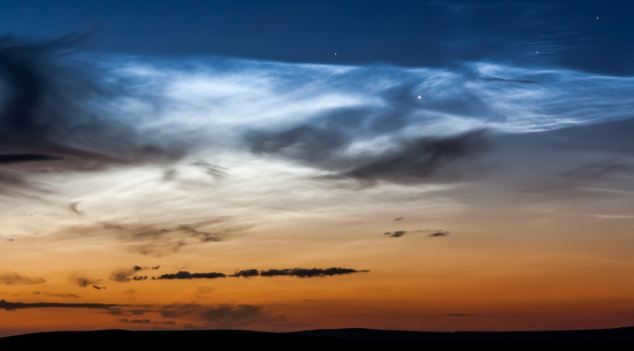
The initial explorations
The Russian Empire was engulfed in a series of military, political, and economic events in the following years, such as the second Russian-Japanese war and the intensification of inter-class conflict leading up to the October Revolution. These events temporarily diverted attention from an extraordinary occurrence. However, as soon as the Civil War concluded, Academician V.I. Vernadsky and the founder of Russian geochemistry A.Ye.E. Fersman took the initiative to organize an expedition to the location where the Tunguska meteorite had fallen.
In 1921, L. A. Kulik, a geophysicist from the Soviet Union, and P. L. Dravert, an explorer, writer, and poet, made a visit to Eastern Siberia. They interviewed eyewitnesses who had witnessed the event thirteen years prior and collected a vast amount of materials regarding the location and circumstances surrounding the landing of the Tunguska meteorite. From 1927 to 1939, several additional expeditions to the Vanavara region were carried out under the guidance of Leonid Alekseevich.
In pursuit of the crater
The primary findings from the initial expedition to the location of the Tunguska meteorite impact were as follows:
- The identification of a radial dispersion of the taiga forest covering an area exceeding 2000 km².
- At the epicenter, the trees remained upright but resembled telegraph poles, stripped of their bark and branches, which further substantiated the theory of an above-ground explosion. Additionally, a marshy lake was discovered here, which Kulik believed concealed the impact crater.
In the second expedition (which took place in the summer and fall of 1928), the team created a comprehensive topographic map of the region. They also captured film and photographs of the dense taiga forest. The researchers were partially successful in removing water from the crater, but the samples collected with the magnetometer revealed no presence of meteoritic material.
Further expeditions to the crash site yielded no results in terms of finding fragments of the extraterrestrial object, apart from tiny particles of silicates and magnetites.
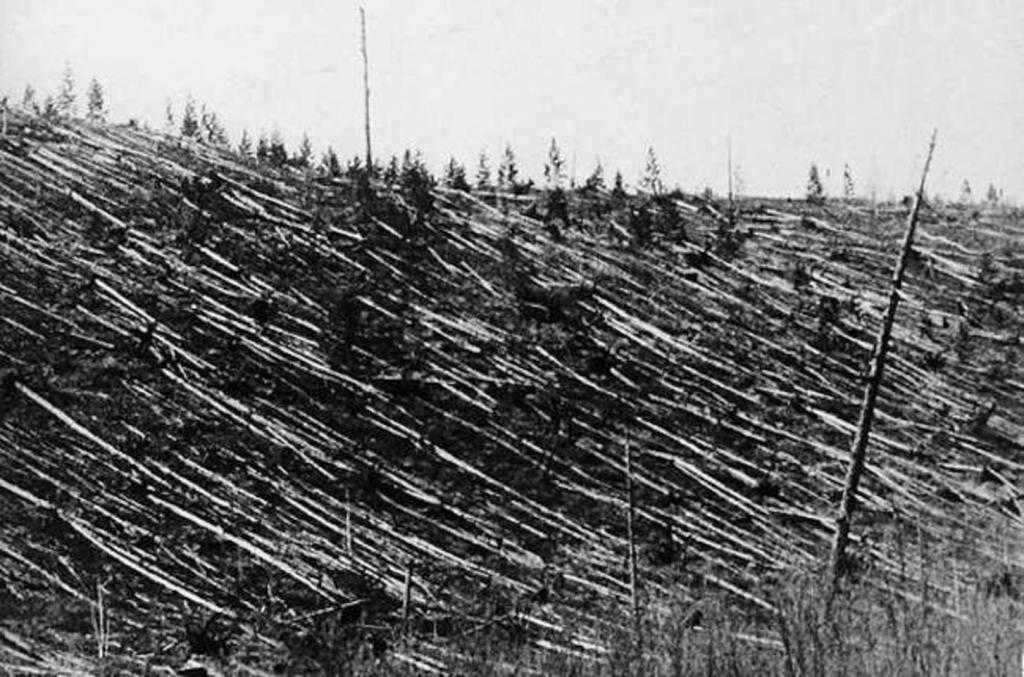
“Stone” Yankovsky
There is one particular incident that deserves special mention. During the third expedition, worker Konstantin Yankovsky came across a brownish stone block with a cellular structure, resembling a meteorite, while on an independent hunt in the Chugrim River area (a tributary of the Khushma). He even managed to capture a photograph of the find. The length of the discovery exceeded two meters, while the width and height were approximately a meter. Leonid Kulik, the project leader, did not attach much importance to the young employee’s report, as he believed that the Tunguska meteorite could only be composed of iron.
Subsequent attempts by enthusiasts to locate the enigmatic stone have proven unsuccessful.
Several pieces of information – numerous theories
Thus, no physical particles corroborating the occurrence of the 1908 Siberian space body impact have been discovered. And as it is commonly understood, the scarcer the evidence, the greater the imagination and suppositions. A hundred years later, not a single hypothesis has gained unanimous acceptance within the scientific community. There are still numerous proponents of the meteorite theory. Its followers firmly believe that the elusive crater containing remnants of the Tunguska meteorite will eventually be unearthed. The Southern swamp of the interfluve is considered the most promising location for the search.
The Soviet planetologist and geochemist, K. P. Florensky, who led one of the expeditions to the Vanavara area in 1958, proposed that the meteorite may have had a porous, cellular structure. According to Florensky, when the meteoritic substance entered the Earth’s atmosphere and was heated, it ignited and interacted with the oxygen in the air, resulting in an explosion.
Some researchers believe that the explosion was caused by an electrical discharge between the positively charged space body (which could have accumulated a massive charge of 10^5 coulombs due to friction with the Earth’s dense atmosphere) and the planet’s surface.
Academician Vernadsky offers an explanation for the lack of a crater, suggesting that the Tunguska meteorite could have been a cloud of cosmic dust that rapidly entered our atmosphere.
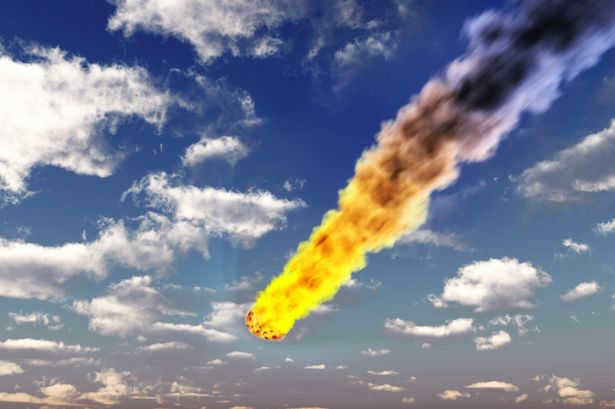
A possible comet nucleus?
There are numerous proponents of the theory that in 1908, our planet encountered a small comet. This hypothesis was initially proposed by Soviet astronomer V. Fasenkov and British scientist J. Whipple. Supporting this theory is the presence of silicate and magnetite particles in the soil near the impact site.
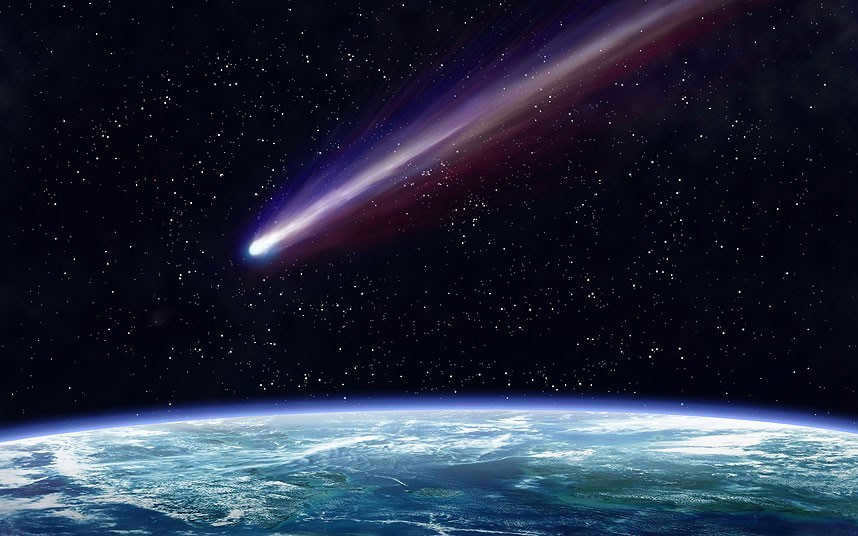
“Explosion” by Kazantsev: A Unique Interpretation
In 1946, the renowned Soviet science fiction author A. P. Kazantsev presented his fascinating take on the Tunguska event. In his story “Explosion”, which was published in the esteemed almanac “Around the World”, Kazantsev’s protagonist, a brilliant physicist, put forth two intriguing theories regarding the enigmatic Tunguska meteorite:
- The celestial object that penetrated Earth’s atmosphere in 1908 was a meteorite composed of “uranium”, resulting in an unprecedented atomic explosion above the vast taiga.
- An alternative explanation for this extraordinary explosion could be the catastrophic crash of an extraterrestrial spacecraft.
Alexander Kazantsev drew his conclusions by comparing the similarities between the effects of the atomic bombings carried out by the United States on the Japanese cities of Hiroshima and Nagasaki and the unexplained event that occurred in 1908. It is important to mention that while the scientific community strongly criticized the writer’s theories, they still managed to gain a following of supporters and admirers.
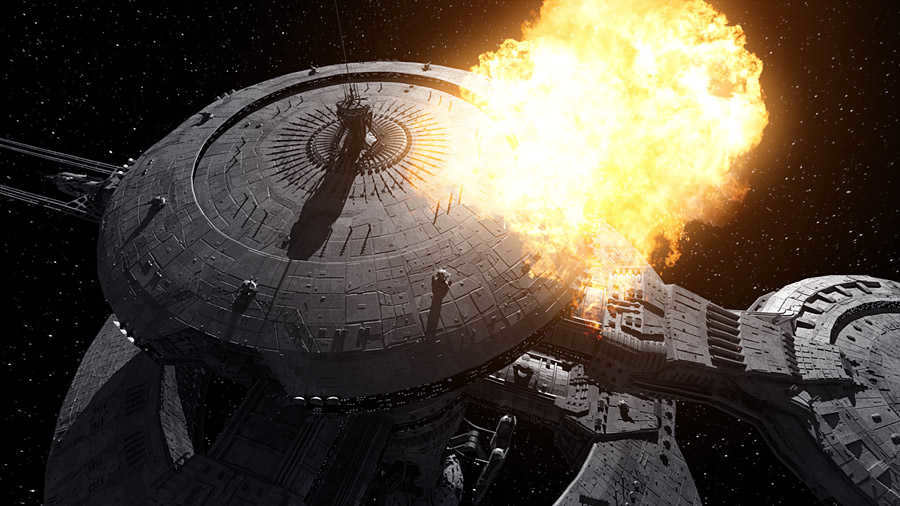
Nikola Tesla and the Tunguska meteorite
Some scientists offer a plausible explanation for the Siberian incident. According to them, the explosion in Vanavara was the result of an experiment conducted by Serbian-American scientist Nikola Tesla on wireless energy transmission over long distances. In the late 19th century, Tesla, also known as the “lord of lightning,” used his remarkable tower in Colorado Springs to illuminate 200 electric light bulbs without the need for conductors, covering a distance of up to 25 miles from the source. In his later project Wardenclyffe, he aimed to transmit electricity through the air to any location on Earth. It is highly likely that the initial surge of energy was generated by Tesla himself. After penetrating the Earth’s atmosphere and accumulating an immense charge, the beam bounced off the ozone layer and, following its calculated trajectory, unleashed its full power upon the desolate northern regions of Russia. Interestingly, the U.S. Congress library archives contain Tesla’s requests for maps of the sparsely populated Siberian territories.
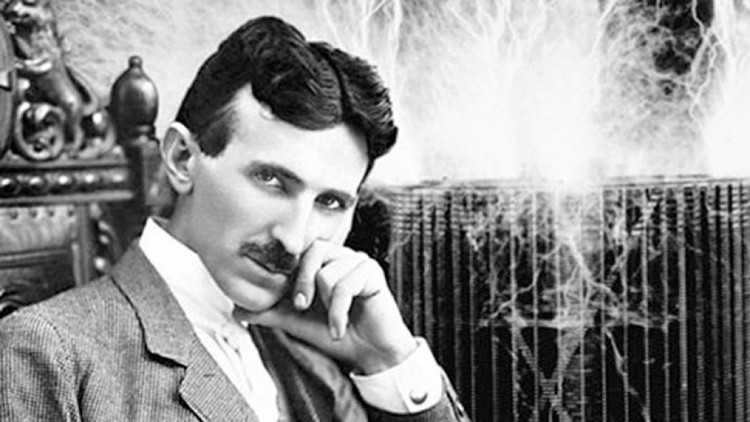
Did it fall from beneath?
Alternative theories about the origin of the event that happened in 1908 do not align well with the documented circumstances. For instance, geologist V. Epifanov and astrophysicist V. Kund proposed that the above-ground explosion could have been caused by the release of millions of cubic meters of natural gas from within the Earth. A similar occurrence of forest collapse on a smaller scale was observed near the village of Cando in Galicia, Spain in 1994, and it was determined that the explosion was caused by the release of underground gas.
Several researchers, including B. N. Ignatov, N. S. Kudryavtseva, and A. Y. Olkhovatov, attribute the Tunguska phenomenon to the collision and detonation of ball lightning, an unusual earthquake, and the sudden activity of the Vanavar volcanic tube.
Exploring the Fundamentals of Science
In the aftermath of the Tunguska meteorite incident, numerous theories have emerged over the years as science has advanced. One notable hypothesis that arose after the discovery of the positron – the antiparticle of the electron – in 1932, was the concept of the Tunguska “guest” being of “anti-nature”. However, this theory fails to adequately explain why antimatter did not annihilate earlier when it would have collided with matter particles in outer space.
As quantum generators (lasers) have been developed, a group of staunch supporters have proposed the idea that in 1908, an unknown generation of cosmic laser penetrated Earth’s atmosphere. However, this theory has not gained widespread acceptance.
In recent years, American physicists A. Jackson and M. Rian have put forward the hypothesis that the Tunguska meteorite might have been a miniature “black hole”. However, this theory has been met with widespread skepticism among the scientific community due to the fact that the predicted consequences of such a collision do not align with the observed evidence.
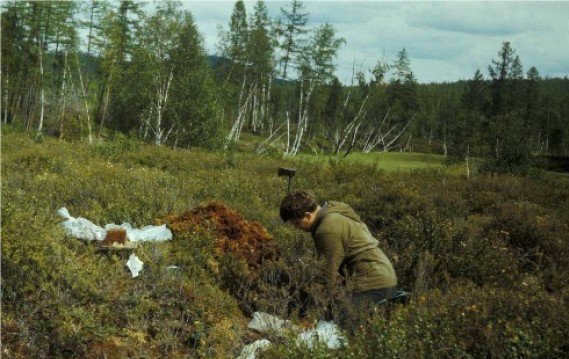
A designated area
It has been over a century since the Tunguska meteorite impact occurred. The photographs and videos captured by the participants of Kulik’s initial expeditions, along with the detailed maps they created, still hold immense scientific significance. Recognizing the extraordinary nature of this event, the Russian Government established a protected reserve in the Podkamennaya Tunguska region spanning approximately 300,000 hectares in October 1995. Numerous scientists from Russia and other countries continue to conduct research within this designated area.
In 2016, on June 30, the day of the Tunguska meteorite fall, the UN General Assembly initiated the proclamation of International Asteroid Day. Recognizing the gravity and potential peril of such occurrences, representatives from the global scientific community organize events on this day to raise awareness about the challenges of searching for and promptly detecting hazardous celestial objects.
Interestingly, the Tunguska meteorite continues to be a popular subject for filmmakers. Documentary films shed light on new expeditions and hypotheses, while video games often feature various fictional artifacts discovered at the epicenter of the explosion.
Every five years or so, different media outlets release excited articles claiming that the enigma of the Tunguska blast has finally been unraveled. One of the most notable statements in recent decades came from Y. Lavbin, the head of the “TCF” (Tunguska Space Phenomenon) foundation. Lavbin declared that quartz cobblestones with strange symbols, supposedly fragments from an extraterrestrial spaceship that crashed in 1908, had been discovered in the vicinity of the disaster.
The leader of the expedition, Vladimir Alekseev (2010, Troitsk Institute for Innovative and Thermonuclear Research), has also made a fascinating discovery. Ground-penetrating radar scanning of the bottom of the Suslovskaya crater revealed a massive block of extraterrestrial ice. According to the scientist’s claims, this ice is a fragment of the comet’s nucleus that caused the catastrophic event in Siberia a hundred years ago.
Mainstream science has refrained from making any comments. Perhaps humanity has encountered a phenomenon that, at its current level of development, cannot be fully understood? One of the researchers studying the Tunguska event astutely pointed out that we might be like primitive tribes witnessing an airplane crash in the jungle.

For a long time, the residents of Siberia held the memory of the morning of June 30, 1908. A blazing entity streaked across the sky, moving in a northern direction, over the expansive region of Eastern Siberia. Upon reaching the Southern Swamp in the water area of the Podkamennaya Tunguska River, the object detonated. According to studies, the Tunguska meteorite’s explosion energy, measured in TNT equivalent, was immense, estimated to be around forty to fifty megatons.
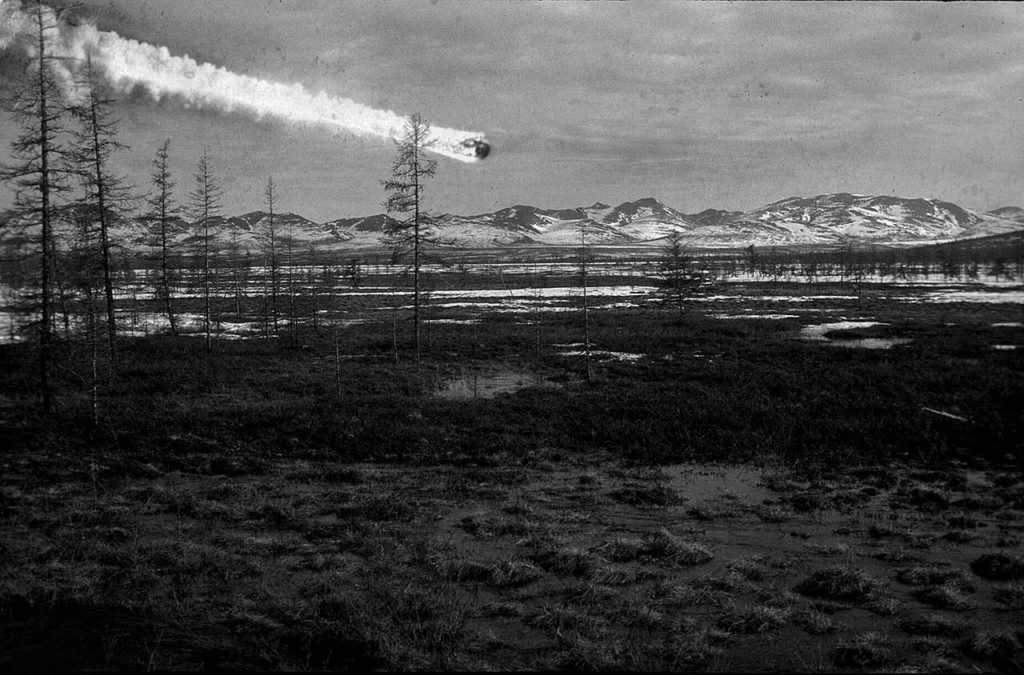
The impact of the Tunguska meteorite caused a devastating shockwave that obliterated everything in a forty-kilometer radius: ancient forests were brought down, wildlife was decimated, and human lives were tragically lost.
After calculating the explosive force of this celestial entity, scientists from that era determined that its weight was not less than five million tons! The impact of the Tunguska explosion was thousands of times more powerful than a nuclear bomb.
Accounts from observers
Individuals residing in three settlements positioned along the trajectory of the object heard a deep rumbling emanating from the sky and witnessed something resembling a sphere or cylinder. Some individuals described the object as having a circular shape. In terms of color, it ranged from red to yellow to white. There was no characteristic comet-like smoke trail, but instead, there was a brilliant fan of rainbow stripes.
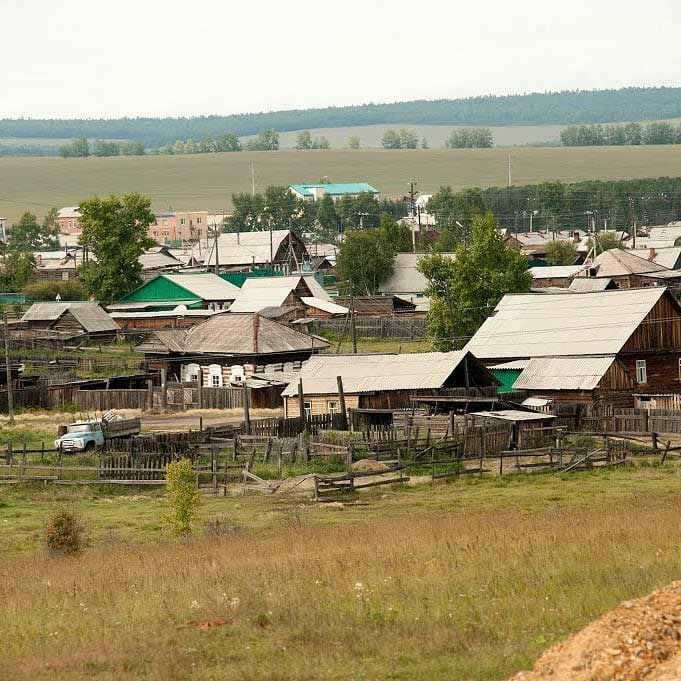
In order to unravel the enigma surrounding the Tunguska meteorite, researchers have categorized all the gathered data into three distinct clusters, based on the geographical placement of the settlements.
- Down South. Witness accounts from this particular group detail the events of June 30 in the following manner: the morning was exceptionally clear and sunny, so the distant yet distinctly audible sound of thunder caught many off guard. Gazing upward at the sky, the witnesses observed an unusual phenomenon – the sun’s rays transformed into peculiar white stripes that crisscrossed one another. Simultaneously, a shapeless object caught their attention as it soared into the depths of the taiga. It was significantly larger than the moon in size. Shortly thereafter, a series of five or six tremors ensued, causing the window panes in the huts to rattle violently (some even shattered and flew out).
- Residents of the Eastern region were startled while riding their horses in the field when they suddenly heard a tremendous roar, causing the horses to come to a halt. Soon after, the sky became engulfed in a thick black fog, with intermittent flashes of fire breaking through. According to another witness, a fireball resembling a haystack swiftly flew by. Minutes later, the sound of cannon shots filled the air. A woman from the village of Preobrazhenka claimed that the explosion was accompanied by a powerful earthquake. The elderly individuals in the area believed that it was the end of the world and began preparing for its arrival. It was later revealed by political exiles that it was “the falling of a planet.”
Evidence was gathered shortly after the explosion, as well as in the late 1920s and early 1930s, and again in the mid-20th century, from long-time residents.
There were numerous hypotheses proposed regarding the Tunguska catastrophe right from its early days. Over a hundred hypotheses were put forward, ranging from strictly scientific explanations to openly mystical theories.
Scientific hypotheses
Two American physicists, Michael Rian and Albert Jackson, proposed a hypothesis suggesting that the Earth collided with a “black hole”.
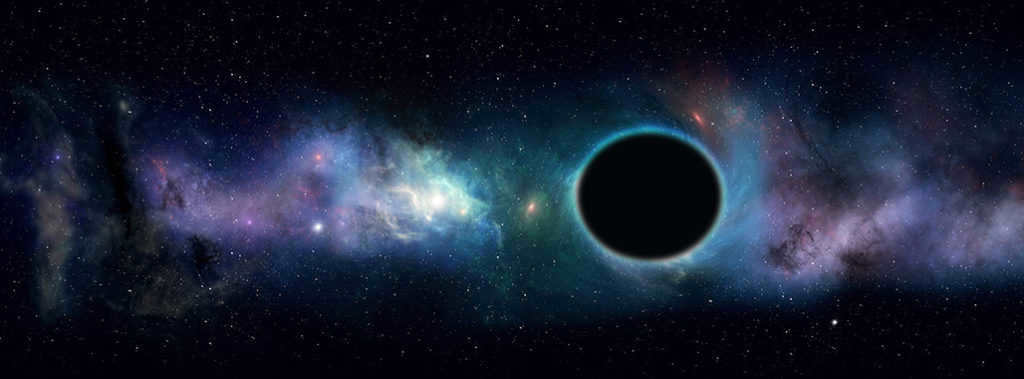
Several scientists discussed the potential occurrence of a massive plasma fragment separating from the Sun. Certain individuals hypothesized that a laser beam was responsible for the event. There were theories suggesting that the “Tunguska visitor” could have been merely a cluster of interstellar dust.
An frozen comet
Among the latest and most fascinating conjectures lies the proposition of an frozen comet by Russian physicist Gennady Bybin. Bybin dedicated over three decades to researching the Tunguska event. Bybin was inspired to propose this theory after studying the diaries of Leonid Kulik, who examined the location of the disaster, albeit not immediately (20 years later), but the very first of all.
During his investigation, Kulik stumbled upon a compressed ice block that was enveloped in peat. It is worth mentioning that he did not initially give much significance to this discovery, but little did he know. Bybin suggests that this ice, along with its frozen gases, did not originate from a mere piece of permanently frozen ground, but rather from a celestial body made of ice – a comet, to be precise. When this comet collided with our planet, it shattered into numerous fragments that rapidly exploded and melted. Gennady firmly believes that his theory is the only accurate one and he remains hopeful that its validity will eventually be confirmed.
However, the prevailing belief among researchers remains that a meteorite visited Earth in 1908 and detonated in the atmosphere.
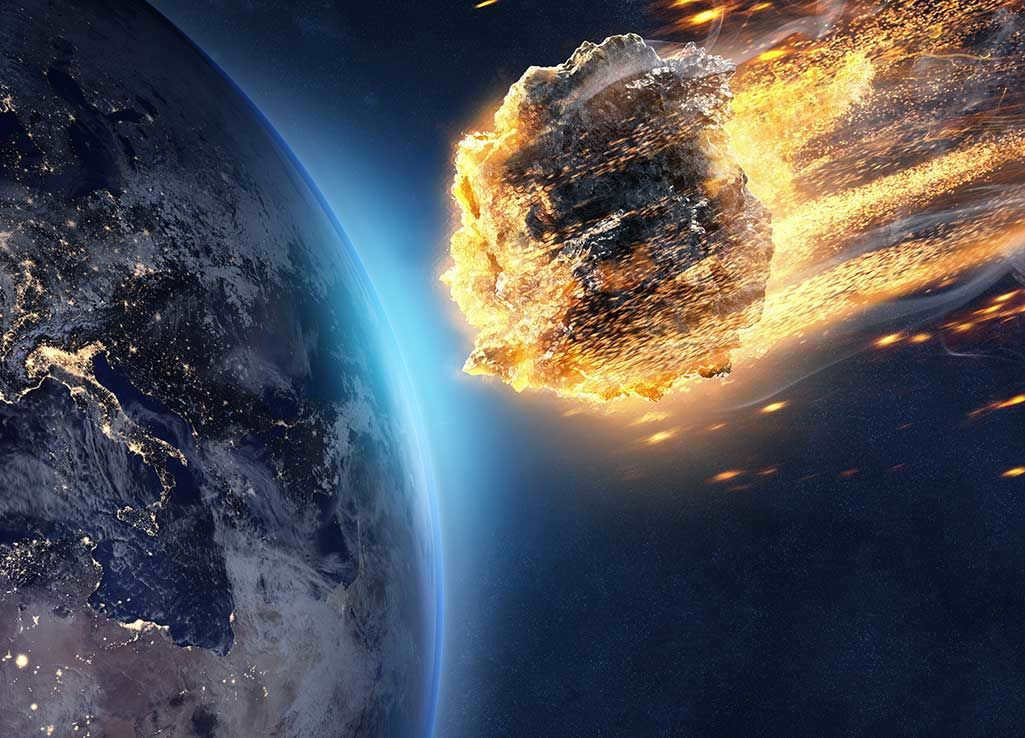
Leonid Kulik, mentioned above, was not particularly impressed with the icy find and was looking for fragments of meteorite rock in the late 1920s. However, if it were a meteorite, there would surely be a crater. Additionally, the fallen taiga trees in the epicenter of the explosion were arranged in a fan shape, with some trunks standing upright in the center, despite losing their branches.
Subsequently, the scientists observed that the region impacted by the disturbance of taiga flora had a shape reminiscent of butterfly wings. The woodland had collapsed across an expanse exceeding two thousand square kilometers. Advanced computational techniques allowed researchers to deduce that the explosion occurred not at ground level, but at an elevation ranging from five to ten kilometers.
Nikola Tesla’s groundbreaking discoveries
In the late 19th and early 20th centuries, there was speculation about the renowned Nikola Tesla’s involvement in the Tunguska meteorite incident. According to this intriguing tale, it was on the very day of the meteorite’s fall that Tesla was conducting experiments, exploring the transmission of energy “through the air”. Interestingly, just before the Tunguska event, Tesla had mentioned his plans to develop a lighting system for Robert Peary’s upcoming North Pole expedition. Furthermore, the Library of Congress in the United States has released documents that suggest Tesla had been seeking maps of the most remote regions of Siberia.
Alternative Explanations
Aside from scientific theories, there are numerous other hypotheses surrounding the Tunguska event. Many of these ideas were conceived by renowned authors and are purely fictional. For instance, Alexander Kazantsev created a story depicting the catastrophe as a failed landing of a Martian spaceship. The Strugatsky brothers also incorporated this event into their novel “Monday Begins on Saturday”.
The Tunguska meteorite is often considered mysterious due to the following reasons:
- Instead of directly hitting the Earth’s surface, the meteorite took a tangential path and broke apart. The resulting fragments scattered over a wide area before finally landing. This explains the absence of a crater and physical evidence. However, scientific calculations do not support this hypothesis.
- In the early 1930s, Vernadsky and Rua expressed their opinion about the collision of our planet with a cloud of cosmic dust.
- In the middle of the last century, V. Solyanik believed that the Tunguska object was a meteorite made of nickel and iron with a positive charge. The impact occurred several dozen kilometers away from the Earth’s surface.
- A superdense fragment of a celestial body from the group of “white dwarfs” fell on Earth.
- According to V. Epifanov’s theory, the Earth’s layers were likely displaced, resulting in a crustal fault that released gases, microparticles of oil, and methane hydrates, which ignited due to a lightning strike.
- L. Kresak suggested in 1976 that the meteorite may be a fragment of the ancient and large comet Encke, as its orbit is shorter than that of any other similar celestial bodies orbiting the Sun.
- “Tungusets,” according to L. Mukharev, is a ball lightning that detonated in Earth’s atmosphere.
This is just a fraction of the hypotheses proposed in the past century, not including extraterrestrial theories.
Tunguska meteorite and unidentified flying objects
Researchers and ufologists have expressed their theories regarding the possible connection between the “Tunguska” event and extraterrestrial civilizations.
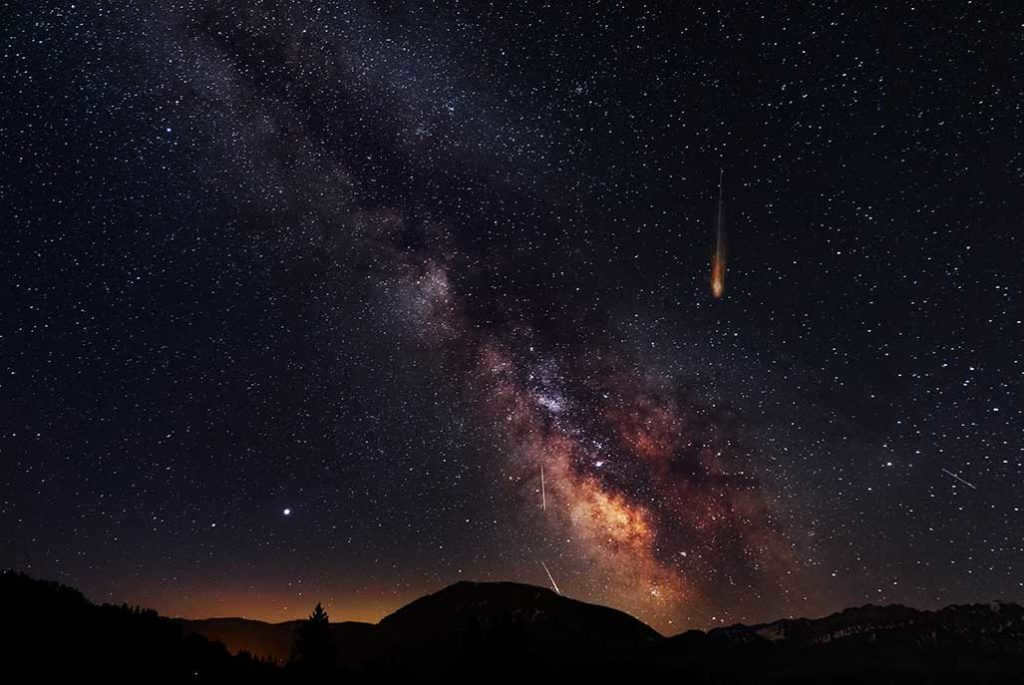
In 1959, F. Siegel drew a parallel between the explosion in the Tunguska taiga and the demise of Phaeton, a planet that once orbited between Jupiter and Mars. It was suggested that the Tunguska disaster occurred in a similar fashion due to the detonation of unidentified flying objects. However, no traces of radiation were detected in the area.
In 1964, G. Altshuller and V. Zhuravlev theorized that the explosion was triggered by a laser signal transmitted to Earth from an extraterrestrial civilization in the Cygnus constellation. Then, three years later, D. Bigby proposed his own concept, suggesting that the meteorite was actually a fragment detached from a large alien spaceship, potentially a manned vessel. Unfortunately, it met an untimely fate and exploded before reaching the Earth.
Interesting facts about the Tunguska meteorite
The Tunguska meteorite caused small alterations in the Earth’s magnetic field, resulting in a magnetic storm that lasted approximately five hours. The seismic stations in Jena, Tashkent, Tbilisi, Irkutsk, and other cities recorded this phenomenon as the shock wave from the meteorite traveled twice around the planet.
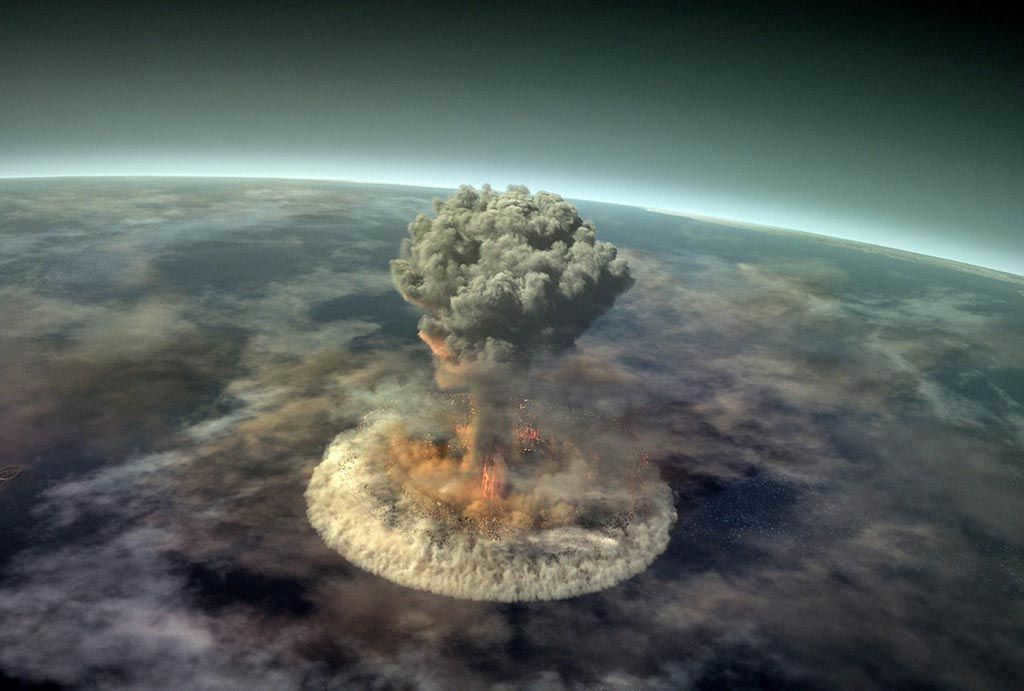
The magnitude of the explosion is comparable to the energy released in the event of a simultaneous detonation of two thousand atomic bombs, such as those that were deployed on Japan during the summer of 1945.
In the moss of the forest, sphagnum, there were discovered particles of extraterrestrial dust, while in the resin of the larch trees, there were fragments of a malleable metal alloy that contained both well-known and unfamiliar substances to inhabitants of Earth.
Expeditions to the Region Where the Tunguska Meteorite Landed
Due to the immense impact caused by the Tunguska meteorite, numerous research expeditions were conducted in Siberia. However, these expeditions were not immediately organized. The director of the Irkutsk Observatory received timely information about the meteorite’s fall, but for unknown reasons, he kept this information classified for a long time. Only a few small mentions of the event appeared in local newspapers.
A significant surge of interest in the event occurred in the 1920s. It was during this time that scientists began to connect the unusual light phenomena observed over vast areas from the Yenisei to the Atlantic with the Tunguska event. This led to the start of active research.
The USSR Academy of Sciences dispatched four teams of scientists to Siberia under the leadership of mineral expert Leonid Kulik. They conducted a comprehensive investigation into the extent of destruction and fires resulting from the outbreak, examined archival records and eyewitness accounts, and measured the radioactive background. However, despite their efforts, the mystery remains unresolved both then and now.
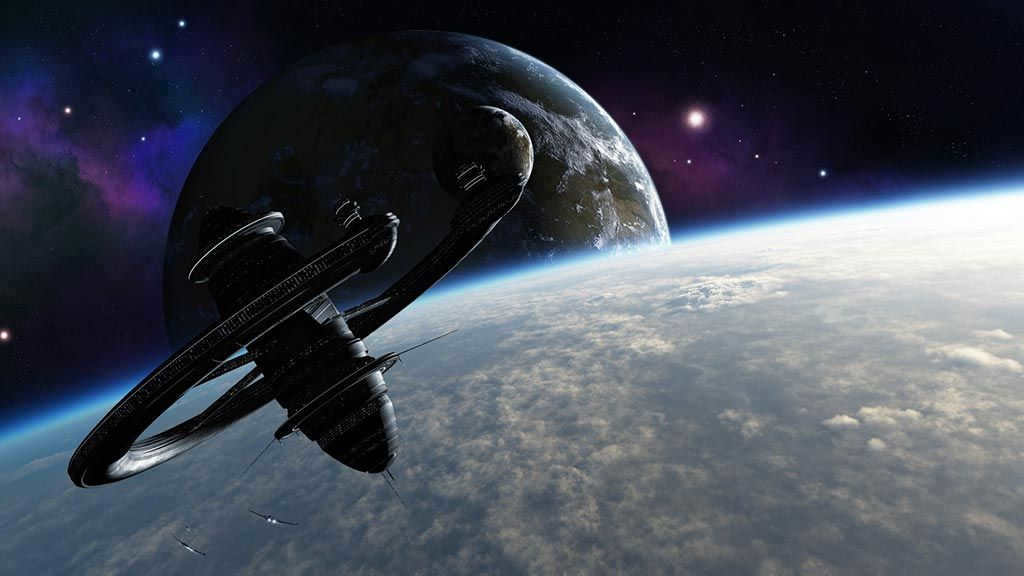
In 1988, the Tunguska Space Phenomenon Foundation in Siberia organized a team led by Yuri Lavbin from St. Petersburg to conduct an expedition. Near the village of Vanavara, they discovered metal rods. This discovery led to the emergence of a theory suggesting that a spaceship had crashed on Earth. According to this theory, the spaceship was sent to our planet to save humanity from a massive comet that was about to cause destruction. Although the comet was successfully destroyed, the spaceship itself suffered damage and had to make an emergency landing. The extraterrestrial beings on board repaired the damaged “saucer” and then returned to their home planet. The damaged metal elements found by the Labvin expedition are believed to be remnants of the spaceship.
In 2006, an incredible discovery occurred at the site of a crash. A search team from Krasnoyarsk stumbled upon quartz stones adorned with enigmatic symbols, seemingly created using advanced techniques, potentially involving the use of plasma. The quartz “pebbles” were subsequently transported to Krasnoyarsk and Moscow, where scientists, including physicists and chemists, analyzed them. Their findings revealed the presence of impurities that are not found on our planet. Y. Labvin proposed the theory that these stones are fragments of a spacecraft that exploded, carrying vital information from extraterrestrial beings to humanity.
Impact of the Tunguska meteorite’s descent
The unexpected arrival of the meteorite had devastating consequences for the Siberian taiga. Vast stretches of lush forest were transformed into an almost lifeless wasteland. However, over time, signs of recovery emerged as new trees began to sprout in the epicenter. These new growths exhibited an extraordinary vigor, surpassing the typical growth rate by threefold.

This kind of image is common in areas with a heightened level of radiation. Nevertheless, no signs of radiation damage were found in the soil. The scientific community is still unaware of all the repercussions resulting from the descent of the Tunguska meteorite.
Mysteries and Legends Surrounding the Tunguska Event
Since the Tunguska meteorite fell, it has given rise to numerous mythical theories, but there is limited reliable information available.
One popular legend regarding the Tunguska meteorite suggests that Lake Cheko, located in the Krasnoyarsk region, was formed as a result of the meteorite’s impact crater. However, Russian scientists have dismissed this theory as unsubstantiated: the sediment at the bottom of the lake is at least three centuries old. Therefore, the lake, although resembling the Tunguska crater in shape, is unrelated to the meteorite.
Each myth surrounding the Tunguska meteorite has been examined to some extent, but a definitive explanation has yet to be found. The mystery of the Tunguska event remains unsolved.
It has been widely acknowledged that peculiar occurrences in the region where the celestial object is anticipated to crash started to manifest beforehand. There was a notable migration of animals from the forested areas. The sky emitted an unusual glow that persisted for several days prior to the disaster. The stretch of land that spans four hundred kilometers south of the epicenter is colloquially referred to as the “devil’s graveyard” and has long been regarded as an area with abnormal properties. It is possible that further investigation will provide insights into the essence of the “Tunguska phenomenon”.
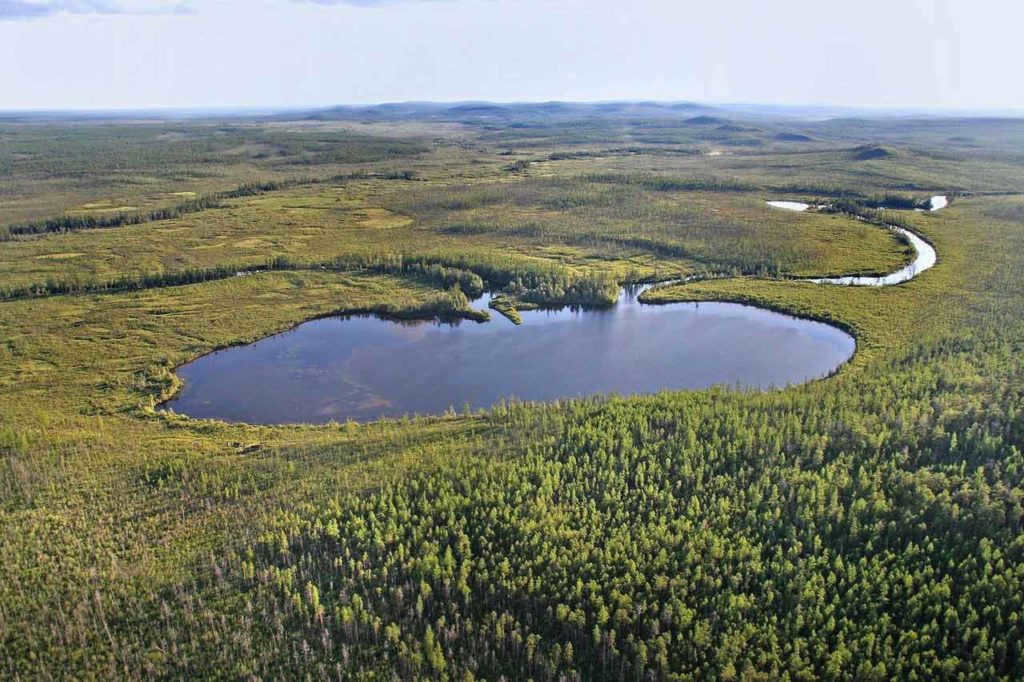
At present, the land is undergoing examination. It has now been incorporated into the Tunguska Nature Reserve. Visitors have the opportunity to participate in guided tours of the locations.
Subscribe to our daily newsletter to receive the most popular article of the day in your email. Connect with us on Facebook and VKontakte.
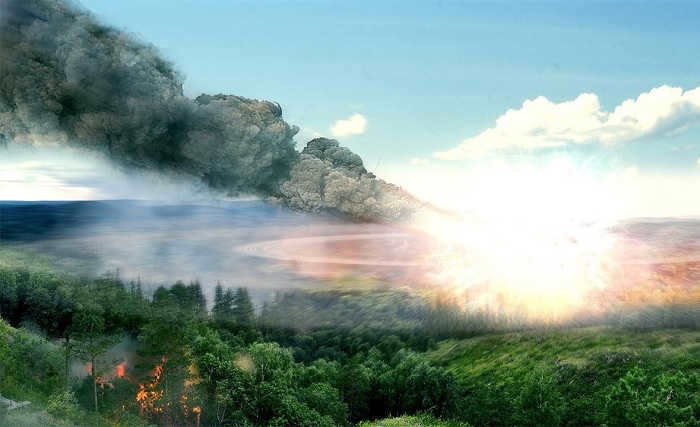
Back in the summer of 1908, an enigmatic detonation occurred in Siberia, leaving scientists baffled to this day. A colossal sphere streaked across the heavens above the region between the Lena and N. Tunguska rivers, emitting a resounding roar and a brilliant light before culminating in a tremendous blast. Despite this event being the most significant recorded instance of a celestial body colliding with our planet, no remnants have ever been recovered. The magnitude of the explosion surpassed the destructive force unleashed by the atomic bombs that devastated Hiroshima in 1945.
A blast of unparalleled magnitude
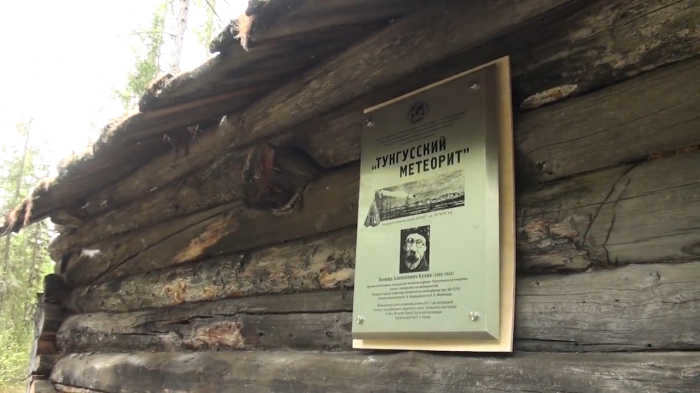
Just before the moment when the celestial object collided with the Earth’s atmosphere, peculiar occurrences were witnessed worldwide, indicating something out of the ordinary. In Russia, esteemed scientists documented the presence of shimmering clouds that seemed to emanate light from within. Astronomers in Britain were perplexed by the arrival of “white nights,” an unprecedented phenomenon for their geographical location. These and other anomalous events persisted for approximately three days leading up to the fateful day. On June 30, 1908, at precisely a quarter past eight, the meteorite entered the upper layers of the Earth’s atmosphere. The celestial body emitted such an intense glow that its luminosity spread across vast distances.
Results and individuals who witnessed the event
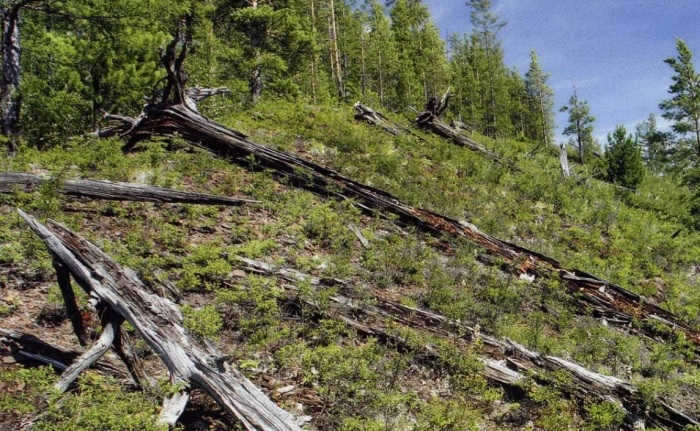

The handful of observers were the residents of the tiny village of Vanavara and a couple of wandering Evenks hunting in the vicinity of the blast site. The ensuing magnetic field fluctuations triggered a magnetic storm, with magnitudes comparable to the aftermath of high-altitude nuclear detonations.
After the disaster, strange atmospheric phenomena were observed across the northern hemisphere, stretching from Krasnoyarsk to the Atlantic coast. These included uniquely colored vibrant twilight, a luminous night sky, shining silver clouds, and a halo around the sun during the day. The sky was so bright at night that it hindered people’s ability to sleep. Scientists later explained that these clouds formed approximately 80 km above the Earth’s surface and reflected sunlight, creating a “white night” effect where it shouldn’t naturally occur. Witnesses in various cities along this latitude reported being able to read newspapers outdoors at night without any additional lighting for several consecutive nights.
Initial investigations and an alternative hypothesis involving extraterrestrial beings
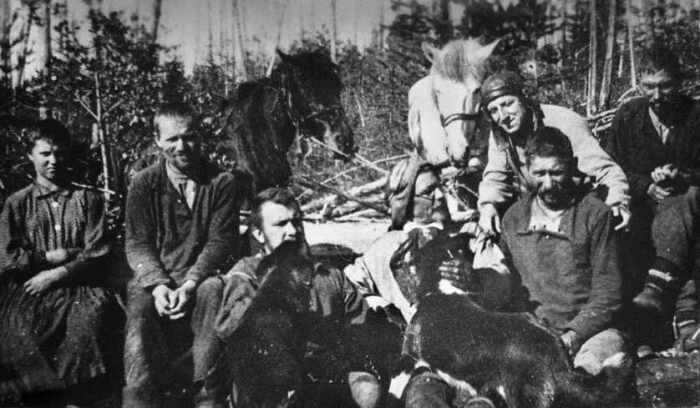

An attempt to investigate the mysterious event was initiated in the 1920s. The USSR Academy of Sciences organized four scientific expeditions led by mineralogist Leonid Kulik to the alleged crash site. Unfortunately, no fragments of the exploded object were discovered, and the research was interrupted by the outbreak of the Great Patriotic War.
In 1988, a research team from the public foundation “Tunguska Phenomenon” embarked on an expedition to Siberia. The expedition was led by Yuri Lavbin, a corresponding member of the St. Petersburg Academy of Sciences and Arts.
Contemporary findings
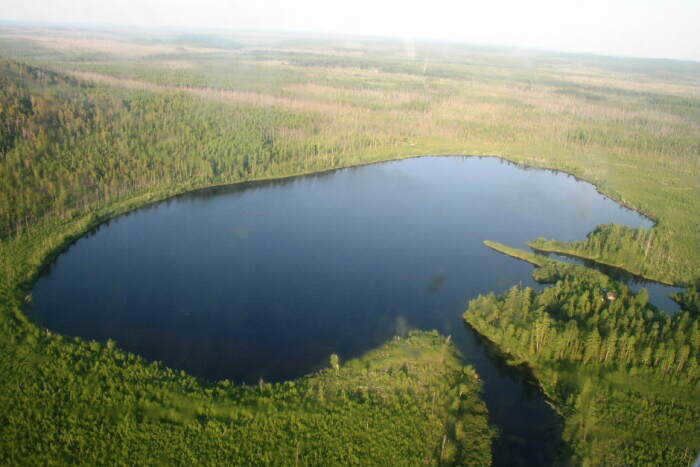

Contemporary scientists largely dismiss ufological explanations for the Tunguska event. The most respected theories agree that a large object from outer space exploded in the atmosphere above the Siberian river. The debate mostly centers around the characteristics of the unidentified object, its origin, and the angle at which it entered Earth’s atmosphere. Recent research indicates that it is likely the space body was not solid, but rather porous. It could have been made up of a substance similar to pumice. Otherwise, there would have been significant debris left at the site of the explosion.
In the 1930s, there was a theory suggesting that the Tunguska meteorite was actually a massive chunk of ice. This idea was supported by both domestic and foreign scientists who pointed to the rainbow stripes and shimmering clouds that followed the meteorite’s flight. Presently, there are numerical calculations that back up this hypothesis. It is possible that the substance of the exploded object contained impurities that fell to the ground after the explosion, rather than being purely ice. However, a significant portion of the material dispersed in the atmosphere or atomized across a wide area, which logically explains the lack of debris and impact crater. Another theory suggests that the Tunguska Lake Cheko could be the meteorite crater, as similar materials to the debris were found at its bottom. However, scientists have not reached a consensus on this matter.

